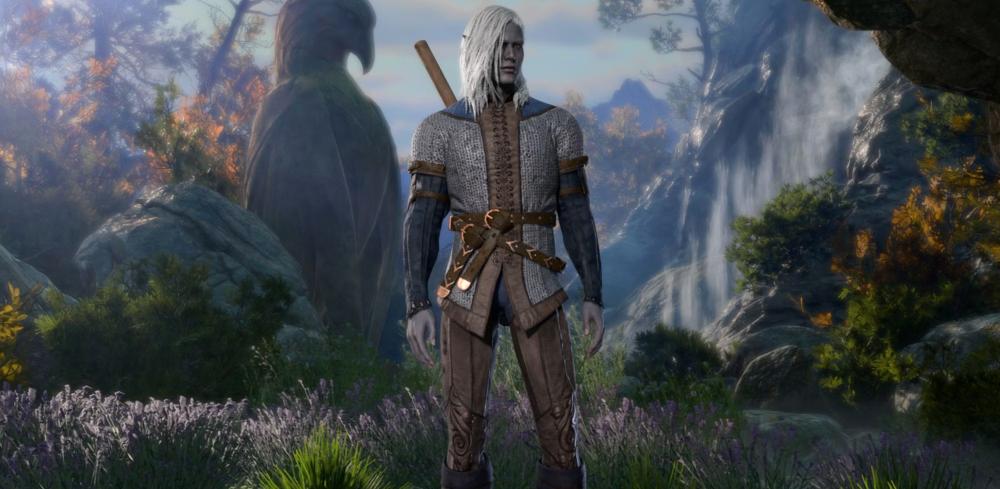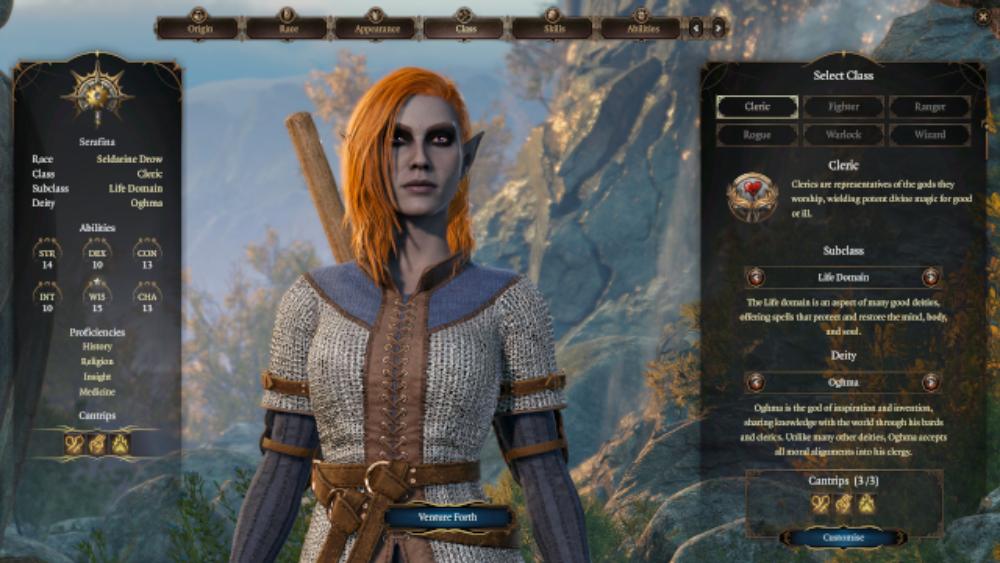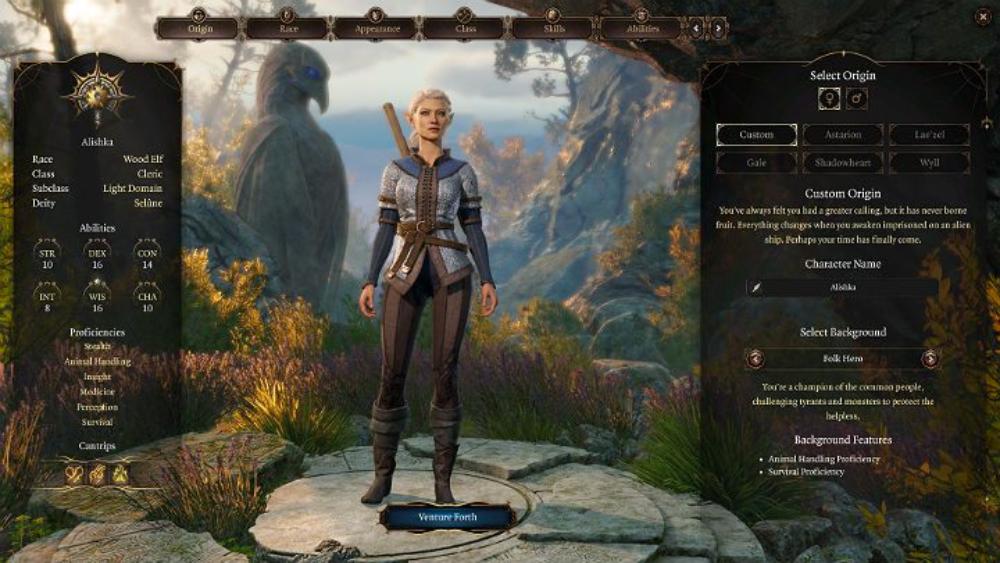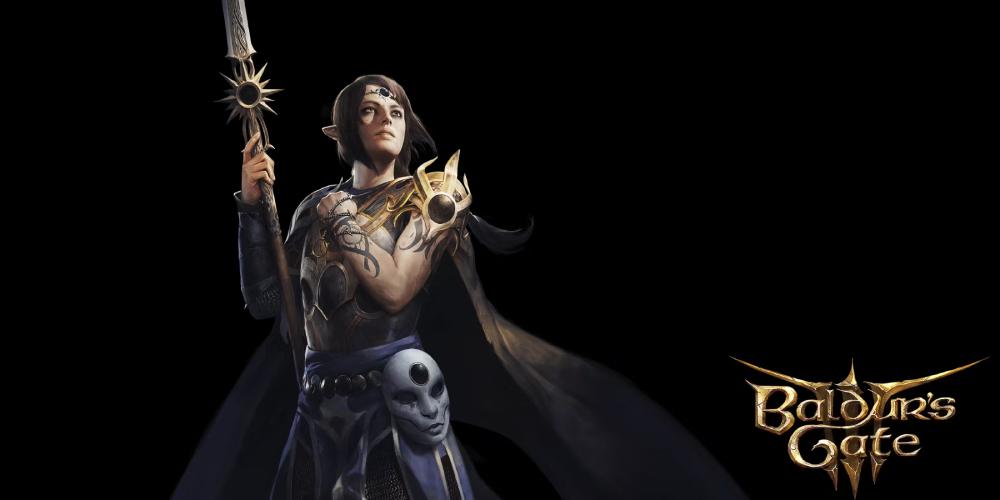Physical Address
304 North Cardinal St.
Dorchester Center, MA 02124
Physical Address
304 North Cardinal St.
Dorchester Center, MA 02124

Hey there, fellow gamers! Are you looking to create the ultimate Cleric character in Baldur’s Gate 3? Well, look no further, because we’ve got you covered. In this article, we’ll guide you through every step of the Cleric character creation process, so you can choose the perfect deity and subclass to complement your party’s playstyle. From steel-clad Mary Poppins to the worst person ever, the possibilities are endless with the diverse selection of deities and subclasses pulled straight out of the Dungeons & Dragons Player’s Handbook. So, let’s dive in and create the ultimate Cleric character in Baldur’s Gate 3!

As a Cleric in Baldur’s Gate 3, you’ll play the role of a spellcaster with a divine affinity, focusing on healing and tanking damage for your party. If you enjoy playing the team healer, then the Cleric class is perfect for you. Additionally, their religious knowledge and following of patron gods adds an interesting dimension to their role, although it doesn’t affect combat. Currently, there are three Domains to choose from, which are the Cleric subclasses, and all have light and medium armor proficiency, shield proficiency, and simple weapon proficiency. Their skills are based around the Wisdom stat, and the Dex/Int stats are unimportant for most builds. You’ll start with three out of five available cantrips, which are basic spells that don’t require a spell slot and can be useful for a long time when you start to run out of resources.
| Domain | Playstyle | Unique Abilities | Example Spells |
|---|---|---|---|
| Light | Offensive, healing | Improved perception, ignite flammable things | Burning Hands, Daylight |
| Trickery | Mischievous, rogue-like | Charm others, vanish, create duplicates of yourself | Blink, Mirror Image |
| Life | Healing, tanking damage | High healing, proficiency in heavy armor | Cure Wounds, Spiritual Weapon |
Domains are a crucial decision for any Cleric, affecting your playstyle with new spells, different abilities, and proficiencies. Each subclass offers unique talents and shared abilities, making them suitable for different roles. The Light Domain is the most offensive, with flame-based domain spells and improved perception. The Trickery Domain is mischievous and allows you to change your appearance, charm others, and vanish. The Life Domain is the most traditional and powerful, with high healing and the ability to tank damage. It can cure characters, remove diseases, and help all party members. Consider your playstyle when choosing your Cleric subclass, and don’t be afraid to experiment with every tool in your arsenal.

Choosing a Cleric Domain in Baldur’s Gate 3 is a big decision that will affect your playstyle throughout the game. To succeed as a Cleric in Baldur’s Gate 3, focus on Wisdom and Constitution, and consider choosing the Gold Dwarf race for added bonuses. For cantrips, Sacred Flame, Thaumaturgy, and Resistance are a great blend of offensive and defensive spells. Don’t forget to equip some heavy armor and get out there!
In this section, we’ll cover the key elements of setting up your Cleric during character creation in Baldur’s Gate 3. First, you’ll need to choose a Background that affects Wisdom Skills to complement your high Wisdom score. Then, you’ll select a Race that aligns with your playstyles, such as Wood Elf for ranged attacks or Gold Dwarf for melee. Next, you’ll choose your Ability Scores, with Wisdom and Constitution being the most important for Clerics. You’ll also pick your starting Equipment, which should include a Shield, and select your starting Spells and Cantrips. Lastly, you’ll customize your appearance and finalize your character’s name and backstory. Following these steps should give you a solid foundation for your Cleric’s journey in the game.

As a Cleric in Baldur’s Gate 3, your character possesses high Dexterity and Wisdom skills. Dexterity skills include Acrobatics, Sleight of Hand, and Stealth, while Wisdom skills include Animal Handling, Insight, Medicine, Perception, and Survival. In terms of abilities, Clerics need Dexterity to focus on Bow combat, as well as extra AC, Constitution for HP, and to help with Concentration, and Wisdom to make good use of offensive spells. A recommended ability distribution for Clerics is STR 10, DEX 16, CON 14, INT 8, WIS 16, CHA 10, allowing for decent damage with the Bow and effective spell casting.
Cantrips are low-level spells that do not require a spell slot to cast. For Cleric characters in Baldur’s Gate 3, the best cantrips to choose from are as follows:
Light is automatically unlocked for the Light Domain subclass, so it’s not necessary to choose it. A good combination to consider is Thaumaturgy, Sacred Flame, and Resistance, which gives a mix of buffs, offense, and charisma advantage. While not the most important decision early on, your choice of cantrips can help with your character’s overall build and playstyle.

To create the best Cleric character, it’s essential to focus on Wisdom above all other attributes. A Cleric with a high Wisdom stat and a decent bit of Constitution and Strength is well-balanced and effective. Simple weapons are the Cleric’s forte, making it essential to focus on hard-hitting weapons that provide some HP. The Gold Dwarf race is a great choice as it has naturally high Wisdom and Constitution. Additionally, Medicine, Persuasion, and Insight are strong skills that can complement Cleric’s abilities. By focusing on these attributes, you can create a Cleric character that is powerful and effective in combat.
As a Cleric in Baldur’s Gate 3, you’ll want to prioritize getting a Longbow, a Shortsword, and a Studded Shield. The Longbow is crucial for ranged combat, while the Shortsword and Shield provide some extra protection in melee combat.
For armor, Medium Armor is the way to go, with Scale Mail +1 or Githyanki Half Plate being the best options in Early Access. Additionally, you may want to consider getting the Herbalist’s Gloves, which remove Poison when you heal Poisoned friendlies, and Broodmother’s Revenge, which adds Poison to your Weapon whenever you are healed. These accessories can come in handy during battles, especially in more difficult areas like The Underdark.
The Cleric class in Baldur’s Gate 3 is a versatile and powerful class that can be customized to fit various playstyles. The best races for this class are Wood Elf and Gold Dwarf, which provide a boost to the necessary attributes for a Cleric build. The best attributes for the Cleric class are Wisdom, Constitution, and Strength. The three Domains available for the Cleric class are Light, Trickery, and Life, each with their own unique spells and abilities. The Life Domain is considered the most powerful due to its strong healing capabilities, while the Trickery Domain is ideal for players who want to have a bit of fun and play a more mischievous character. As for cantrips, the most useful ones for the Cleric class are Guidance, Resistance, Sacred Flame, Thaumaturgy, and Light. In terms of equipment and accessories, the Cleric class should focus on obtaining a Longbow as soon as possible and using Medium Armor, such as Scale Mail +1 or Githyanki Half Plate, along with a Studded Shield or Adamantine Shield for extra protection. Herbalist’s Gloves and Broodmother’s Revenge are also useful accessories to have.
Overall, the Cleric class in Baldur’s Gate 3 offers a lot of customization options and can be a great addition to any party. By selecting the right race, attributes, and Domains, players can create a powerful and versatile character that can handle a variety of situations.